Best Elixir Programming Books to Buy in December 2025
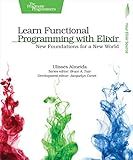
Learn Functional Programming with Elixir: New Foundations for a New World (The Pragmatic Programmers)


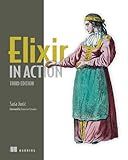
Elixir in Action, Third Edition


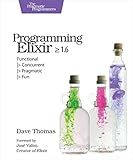
Programming Elixir ≥ 1.6: Functional |> Concurrent |> Pragmatic |> Fun


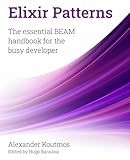
Elixir Patterns: The essential BEAM handbook for the busy developer


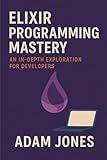
Elixir Programming Mastery: An In-Depth Exploration for Developers


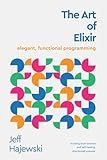
The Art of Elixir: elegant, functional programming


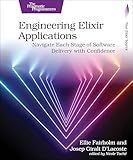
Engineering Elixir Applications: Navigate Each Stage of Software Delivery with Confidence


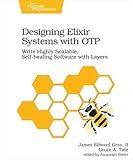
Designing Elixir Systems With OTP: Write Highly Scalable, Self-healing Software with Layers


In Elixir, you can pass maps to functions in a similar way to passing other data types. When defining a function, you can specify a parameter that accepts a map as an argument. To pass a map to this function, you simply include the map as an argument when calling the function.
For example, if you have a function called process_map that accepts a map as an argument, you can call this function and pass a map like this:
map = %{key1: "value1", key2: "value2"}
process_map(map)
Inside the process_map function, you can access the values of the map using pattern matching or the Map.get/2 function. For example, you can access the value of key1 in the map parameter like this:
def process_map(map) do value1 = Map.get(map, :key1) IO.puts(value1) end
This will output "value1" to the console. You can also perform various operations on the map within the function, such as updating values or extracting specific keys.
In summary, passing maps to functions in Elixir is straightforward and follows the same syntax as other data types. Just specify a map parameter in the function definition and pass a map as an argument when calling the function.
What is the syntax for accessing values from maps in Elixir?
To access values from a map in Elixir, you can use the square bracket syntax or the Map.get/2 function.
Square bracket syntax:
map = %{key: "value"} value = map[:key]
Map.get/2 function:
map = %{key: "value"} value = Map.get(map, :key)
In both cases, replace key with the key of the value you want to access in the map.
What is the default implementation for maps in Elixir?
In Elixir, the default implementation for maps is a hash array mapped trie, also known as HAMT. This data structure allows for fast lookups, insertions, and deletions and is optimized for memory efficiency by sharing common subtrees between different maps.
How to merge maps in Elixir?
To merge maps in Elixir, you can use the Map.merge/2 function. This function takes two maps as arguments and returns a new map with the values of the second map merged into the first map. Here's an example of how you can merge two maps in Elixir:
map1 = %{a: 1, b: 2} map2 = %{b: 3, c: 4}
merged_map = Map.merge(map1, map2)
Output: %{a: 1, b: 3, c: 4}
In this example, the values of map2 are merged into map1, with any conflicting keys taking the value of the key in map2.
What is the purpose of the Map module in Elixir?
The purpose of the Map module in Elixir is to provide functionality for working with maps, which are key-value data structures in Elixir. Maps allow you to associate keys with values, similar to dictionaries or associative arrays in other programming languages. The Map module provides functions for creating, updating, and accessing elements in maps, as well as performing various operations on maps such as merging, filtering, and transforming them. It is a fundamental data structure in Elixir and is commonly used for storing and manipulating structured data.
What is the difference between maps and structs in Elixir?
In Elixir, maps and structs are both data structures used to store key-value pairs, but they have some key differences:
- Maps:
- Maps are unordered collections of key-value pairs.
- Keys can be of any data type.
- Keys are not required to be atoms.
- Maps can be accessed using the map[key] syntax.
- Maps can be created using the %{} syntax.
Example:
map = %{"name" => "Alice", :age => 30} IO.puts(map["name"]) # "Alice" IO.puts(map[:age]) # 30
- Structs:
- Structs are a special type of map with a specific set of keys and a defined structure.
- Keys are atoms and have to be explicitly defined in a struct.
- Structs are used for organizing data and providing a clear structure.
- Structs can be accessed using the struct.field syntax.
Example:
defmodule User do defstruct name: nil, age: nil end
user = %User{name: "Alice", age: 30} IO.puts(user.name) # "Alice" IO.puts(user.age) # 30
In summary, maps are more flexible and can be used for general purposes where key-value pairs need to be stored, while structs provide a clearer, more structured way of organizing and accessing data with predefined keys.
What is the performance impact of using maps in Elixir?
In Elixir, maps are implemented as hash maps, which are highly efficient for lookups and updates. Accessing a value in a map has a time complexity of O(1), meaning it is a constant-time operation regardless of the size of the map. Updating a value in a map also has a time complexity of O(1).
Therefore, the performance impact of using maps in Elixir is generally minimal and should not significantly impact the overall performance of your application. Maps are a fundamental data structure in Elixir and are used extensively in functional programming to store key-value pairs and other data structures.
